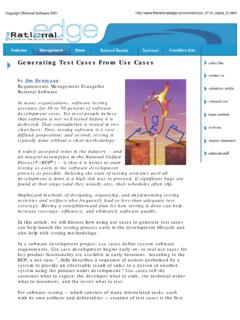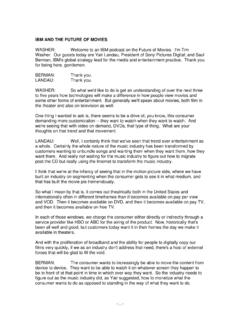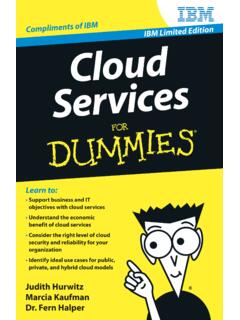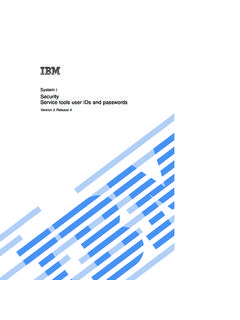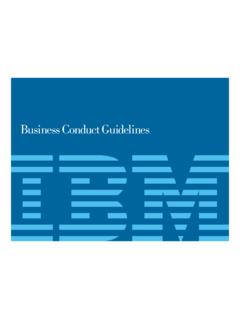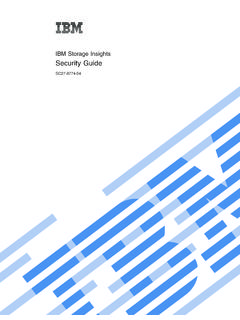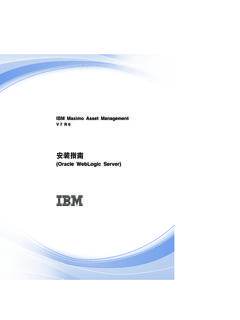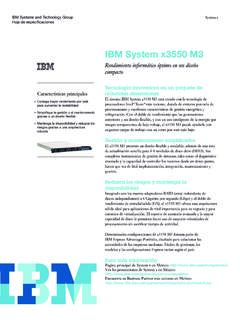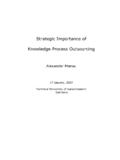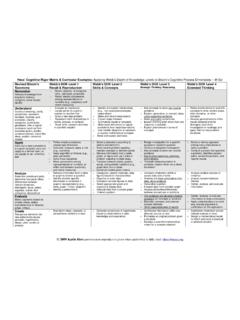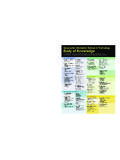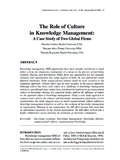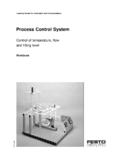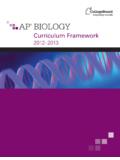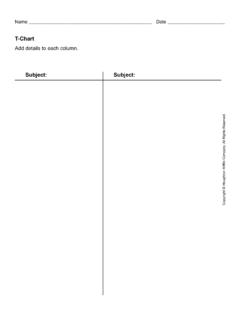Transcription of Best Practices for Software Development Teams
1 rational unified process Best Practices for Software Development Teams rational Software White Paper TP026B, Rev 11/01. Table of Contents WHAT IS THE rational unified process ? .. 1. EFFECTIVE DEPLOYMENT OF 6 BEST 1. process OVERVIEW .. 3. TWO 3. PHASES AND ITERATIONS - THE TIME 3. INCEPTION PHASE .. 4. ELABORATION PHASE .. 4. CONSTRUCTION PHASE .. 6. TRANSITION PHASE .. 6. ITERATIONS .. 7. STATIC STRUCTURE OF THE 7. ACTIVITIES, ARTIFACTS, AND WORKERS .. 8. WORKFLOWS .. 9. CORE WORKFLOWS .. 10. BUSINESS MODELING .. 10. REQUIREMENTS .. 11. ANALYSIS & DESIGN .. 11. 12. TEST .. 12. DEPLOYMENT .. 13. PROJECT MANAGEMENT .. 13. CONFIGURATION & CHANGE 13. ENVIRONMENT .. 14. rational unified process - THE PRODUCT .. 14. NAVIGATING THE KNOWLEDGE 15. Development KIT FOR process CUSTOMIZATION.
2 15. INTEGRATION WITH 16. A BRIEF HISTORY OF THE rational unified 16. REFERENCES .. 18. Abstract This paper presents an overview of the rational unified process the rational unified process is a Software engineering process , delivered through a web-enabled, searchable knowledge base. The process enhances team productivity and delivers Software best Practices via guidelines, templates and tool mentors for all critical Software lifecycle activities. The knowledge base allows Development Teams to gain the full benefits of the industry-standard unified Modeling Language (UML). rational unified process : Best Practices for Software Development Teams What is the rational unified process ? The rational unified process is a Software Engineering process . It provides a disciplined approach to assigning tasks and responsibilities within a Development organization.
3 Its goal is to ensure the production of high-quality Software that meets the needs of its end-users, within a predictable schedule and budget. [11, 13]. The rational unified process is a process product, developed and maintained by rational Software . The Development team for the rational unified process are working closely with customers, partners, rational 's product groups as well as rational 's consultant organization, to ensure that the process is continuously updated and improved upon to reflect recent experiences and evolving and proven best Practices . The rational unified process enhances team productivity, by providing every team member with easy access to a knowledge base with guidelines, templates and tool mentors for all critical Development activities. By having all team members accessing the same knowledge base, no matter if you work with requirements, design, test, project management, or configuration management, we ensure that all team members share a common language, process and view of how to develop Software .
4 The rational unified process activities create and maintain models. Rather than focusing on the production of large amount of paper documents, the unified process emphasizes the Development and maintenance of models semantically rich representations of the Software system under Development . [3, 7, 8]. The rational unified process is a guide for how to effectively use the unified Modeling Language (UML). The UML is an industry-standard language that allows us to clearly communicate requirements, architectures and designs. The UML was originally created by rational Software , and is now maintained by the standards organization Object Management Group (OMG). [4]. The rational unified process is supported by tools, which automate large parts of the process . They are used to create and maintain the various artifacts models in particular of the Software engineering process : visual modeling, programming, testing, etc.
5 They are invaluable in supporting all the bookkeeping associated with the change management as well as the configuration management that accompanies each iteration. The rational unified process is a configurable process . No single process is suitable for all Software Development . The unified process fits small Development Teams as well as large Development organizations. The unified process is founded on a simple and clear process architecture that provides commonality across a family of processes. Yet, it can be varied to accommodate different situations. It contains a Development Kit, providing support for configuring the process to suit the needs of a given organization. The rational unified process captures many of the best Practices in modern Software Development in a form that is suitable for a wide range of projects and organizations.
6 Deploying these best Practices using the rational unified process as your guide offers Development Teams a number of key advantages. In next section, we describe the six fundamental best Practices of the rational unified process . Effective Deployment of 6 Best Practices The rational unified process describes how to effectively deploy commercially proven approaches to Software Development for Software Development Teams . These are called best Practices not so much because you can precisely quantify their value, but rather, because they are observed to be commonly used in industry by successful organizations. The rational unified process provides each team member with the guidelines, templates and tool mentors necessary for the entire team to take full advantage of among others the following best Practices : 1.
7 Develop Software iteratively 2. Manage requirements 3. Use component-based architectures 1. rational unified process : Best Practices for Software Development Teams 4. Visually model Software 5. Verify Software quality 6. Control changes to Software Develop Software Iteratively Given today's sophisticated Software systems, it is not possible to sequentially first define the entire problem, design the entire solution, build the Software and then test the product at the end. An iterative approach is required that allows an increasing understanding of the problem through successive refinements, and to incrementally grow an effective solution over multiple iterations. The rational unified process supports an iterative approach to Development that addresses the highest risk items at every stage in the lifecycle, significantly reducing a project's risk profile.
8 This iterative approach helps you attack risk through demonstrable progress frequent, executable releases that enable continuous end user involvement and feedback. Because each iteration ends with an executable release, the Development team stays focused on producing results, and frequent status checks help ensure that the project stays on schedule. An iterative approach also makes it easier to accommodate tactical changes in requirements, features or schedule. [1, 2, 10]. Manage Requirements The rational unified process describes how to elicit, organize, and document required functionality and constraints; track and document tradeoffs and decisions; and easily capture and communicate business requirements. The notions of use case and scenarios proscribed in the process has proven to be an excellent way to capture functional requirements and to ensure that these drive the design, implementation and testing of Software , making it more likely that the final system fulfills the end user needs.
9 They provide coherent and traceable threads through both the Development and the delivered system. [7]. Use Component-based Architectures The process focuses on early Development and baselining of a robust executable architecture, prior to committing resources for full-scale Development . It describes how to design a resilient architecture that is flexible, accommodates change, is intuitively understandable, and promotes more effective Software reuse. The rational unified process supports component-based Software Development . Components are non-trivial modules, subsystems that fulfill a clear function. The rational unified process provides a systematic approach to defining an architecture using new and existing components. These are assembled in a well-defined architecture, either ad hoc, or in a component infrastructure such as the Internet, CORBA, and COM, for which an industry of reusable components is emerging.
10 [5]. Visually Model Software The process shows you how to visually model Software to capture the structure and behavior of architectures and components. This allows you to hide the details and write code using graphical building blocks. Visual abstractions help you communicate different aspects of your Software ; see how the elements of the system fit together; make sure that the building blocks are consistent with your code; maintain consistency between a design and its implementation; and promote unambiguous communication. The industry- standard unified Modeling Language (UML), created by rational Software , is the foundation for successful visual modeling. [4, 12]. Verify Software Quality Poor application performance and poor reliability are common factors which dramatically inhibit the acceptability of today's Software applications.

